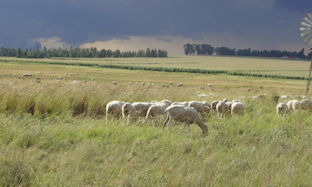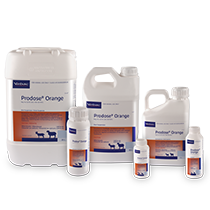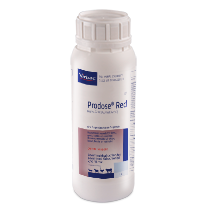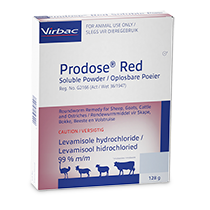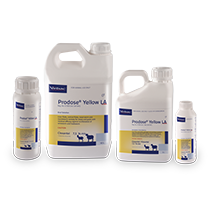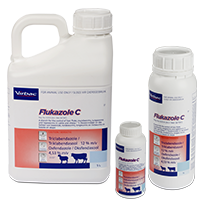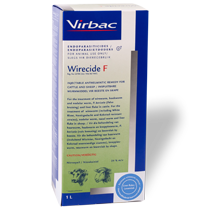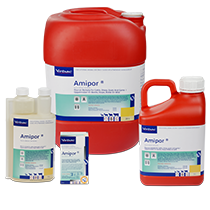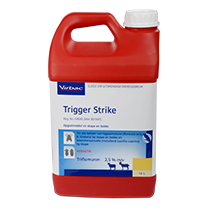
SHEEP MANAGEMENT PRE-LAMBING: Parasite control
This is article 5 of 6 articles on this topic
The effect of internal parasites is much more detrimental and serious in sheep than in cattle. External parasites are generally a less serious problem in sheep, although lice and mites can have a major negative impact on sheep . Ticks and insects can also contribute to diseases and conditions that can have a negative impact on profitability.
Rams can be very easily neglected when important actions such as lambing time arrive - especially if they are not under regular supervision. Please do not forget them!.
Internal parasites
Season and area will play a major role in the need for, and control of parasites. The presence of internal parasites in late pregnancy can lead to a decrease in ewes' appetite, lower feed intake, impaired lamb development at a time when maximum growth must take place, decrease ewes' condition - which can impair udder development, colostrum and milk production.
In wool sheep, even the wool production potential of the unborn lambs can be negatively affected by a high internal parasite burden in the ewe. The development of the lamb's wool follicles, which takes place in late pregnancy, can be stunted if the ewe's condition declines as a result of a high parasite load.
Roundworms have usually the biggest negative impact on ewe wellbeing.Therefore, it is recommended to treat ewes in late pregnancy (last month before lambing) with a broad spectrum product that also provides residual protection against wire worm. This is called a strategic dose . The residual action can also prevent the need for ewes to be dosed during the lambing. In areas where brown stomach word is prevalent, the remedy used must be effective this parasite.
Nasal worm control is important as ewes use their sense of smell to bond with their lamb(s) after the birthing process. (Remember that a nasal discharged is not only caused by nasal worm, but can be because of pneumonia that needs to be treated immediately!)
Ewes can be infected with tapeworm. Although it does not have the same negative effect on mature sheep as it does on lambs, the ewes can infect the pasture with tapeworm eggs and increase the infection of lambs. Therefore it is advisable that the remedy used for the pre lambing treatment, is also effective against tapeworm.
Liver fluke affects the functioning of the liver which can have a negative effect on almost all body processes - especially protein and energy metabolism which is critical at this time! In areas where liver fluke is present, the remedy used for the pre lambing treatment must also be effective against liver fluke.
In late pregnancy, ewes develop a condition known in as “PPRR”. PPRR is the abbreviation for "periparturient relaxation of resistance", and is thought to be activated by hormonal changes in the ewe in late pregnancy. This has the effect of lowering the resistance of ewes against parasites and increasing parasite numbers. This not only effects the ewe, but also increases the contamination of the grazing.
Take dung samples with dosing for determination of dung egg counts and again 10 days later from the same sheep, to make sure that the drug used was effective. During this critical time, we can’t afford to find out only later that the treatment was not effective!
What you can’t see, can cost you!!
External Parasites
Although external parasites generally do not present a major challenge early in the season, their occurrence should be monitored and controlled as needed.
Ticks can cause sheep to become crippled and develop hoof infection. This will negatively affect the ewe's ability to walk and impair feed intake, with all the negative consequences as already discussed above.
Lice and mites (sheep scab) can also cause severe irritation that will require urgent control. NB. It is extremely important to correctly diagnose the parasite, as this will determine the treatment protocol. Lice are not controlled by injectable products, while sheep scab mites can be controlled with an injectable product. Furthermore, it is important that all the sheep on the farm are treated at the same time. A follow-up treatment should be done 10-14 days later to prevent re-infestation caused by newly hatched larvae. In the case of sheep scab, a follow-up treatment is legally required. (The eggs of lice and mites are not killed by any treatment).
Insects (midges) are usually a bigger challenge later in the season - mid to late summer. It is responsible for the transmission of viral diseases such as bluetongue and Rift Valley fever. Since the control of insects in extensive conditions is very difficult, vaccinations need to be done as soon as possible after lambing to prevent these diseases - especially in high rainfall years when the chances of the transmitting of these diseases increase.
Don’t under estimate the negative impact of external parasites!

